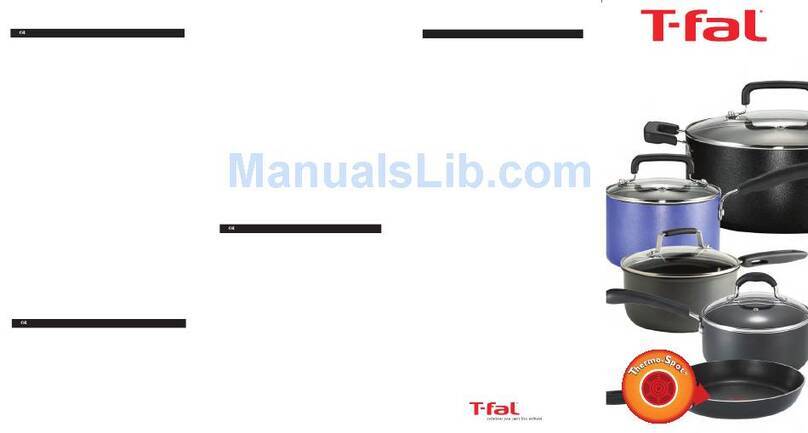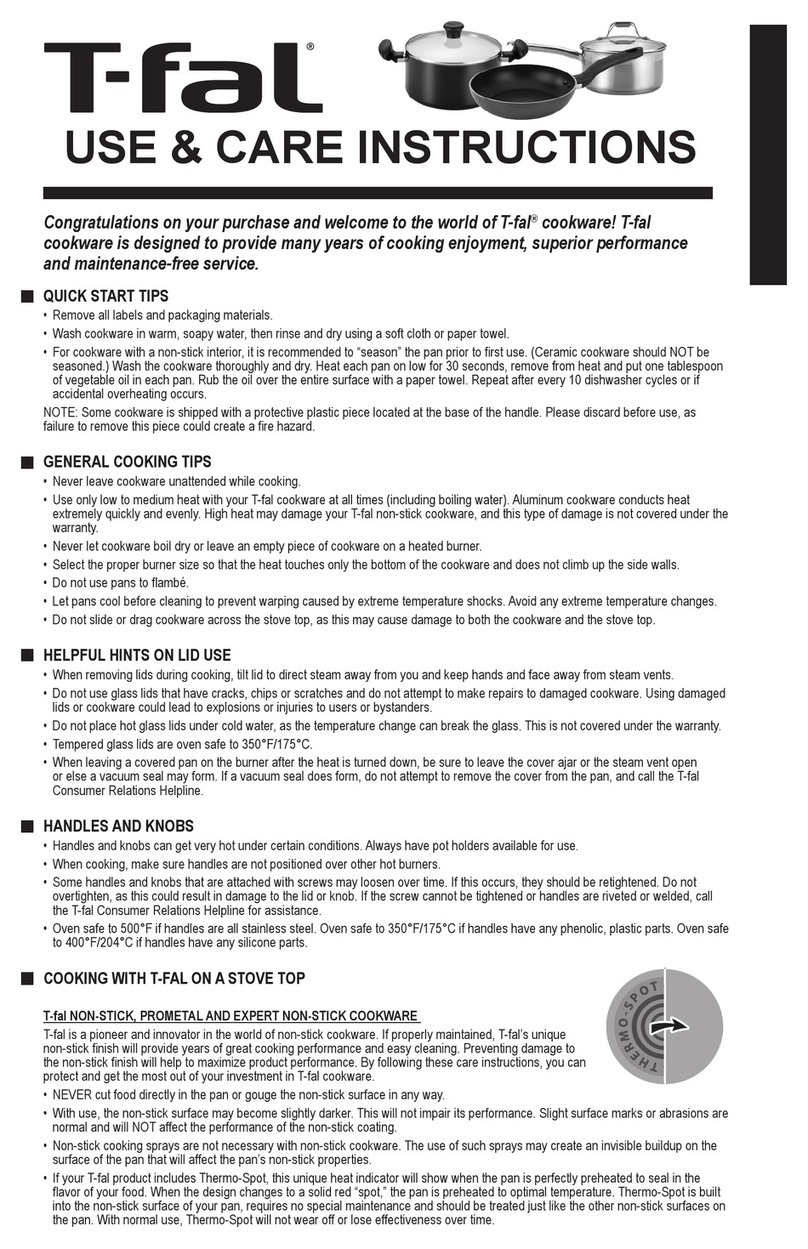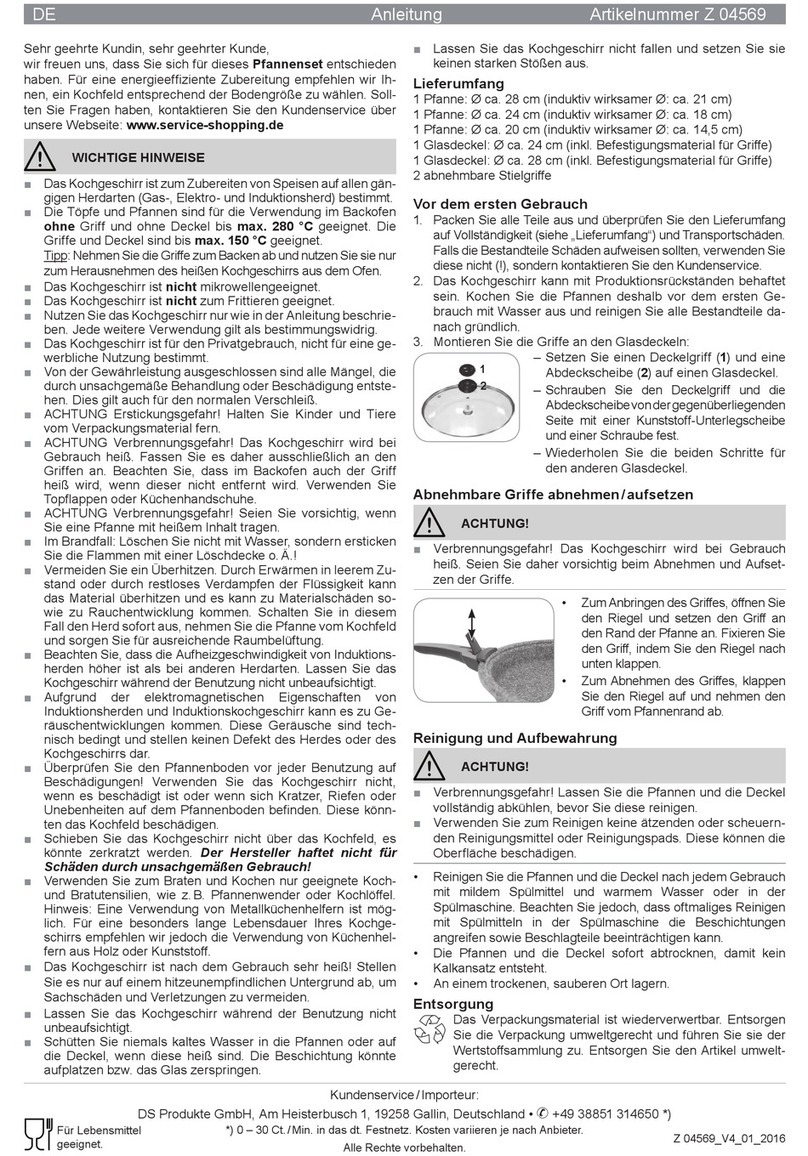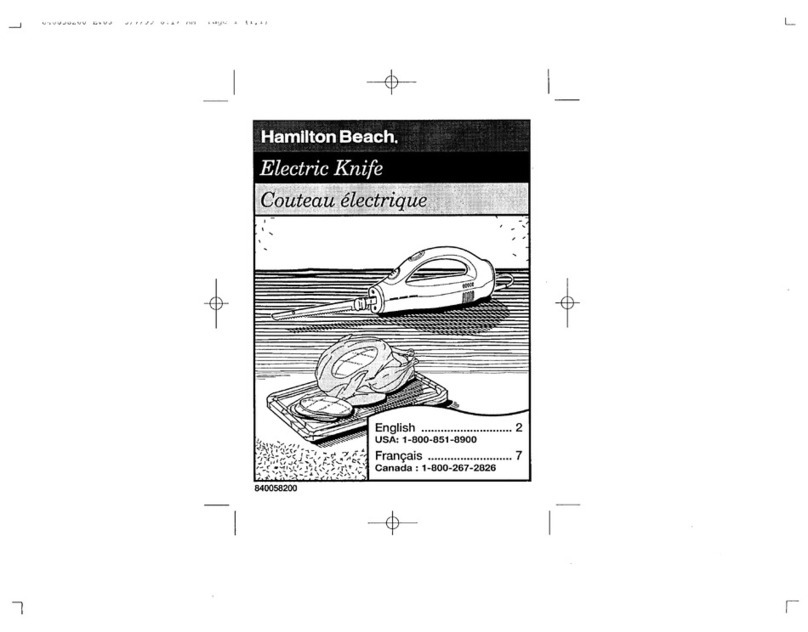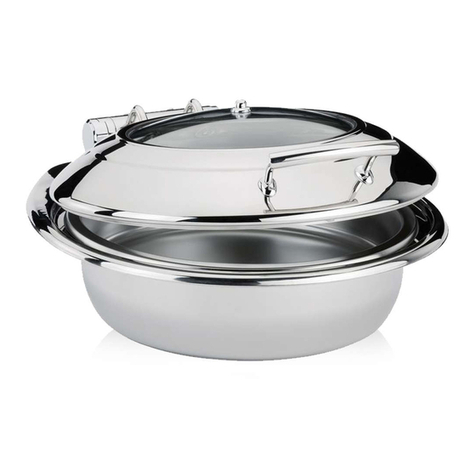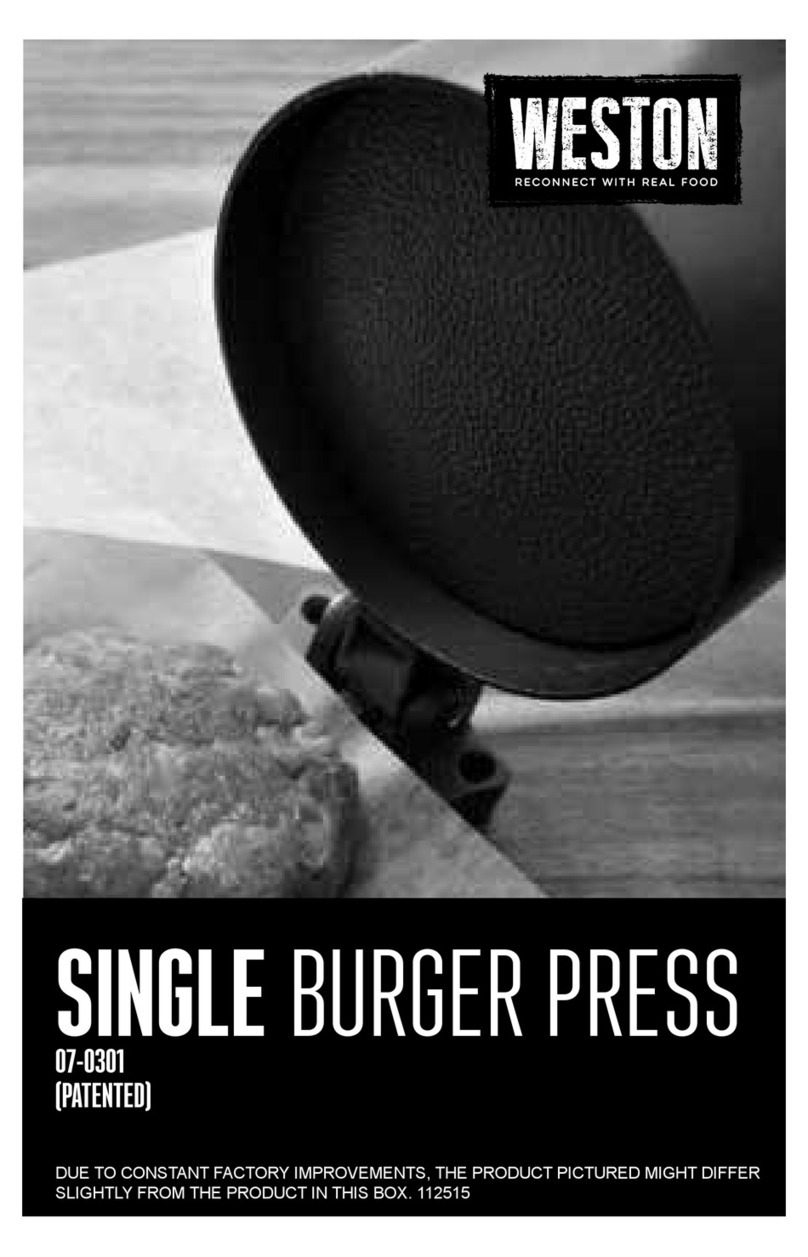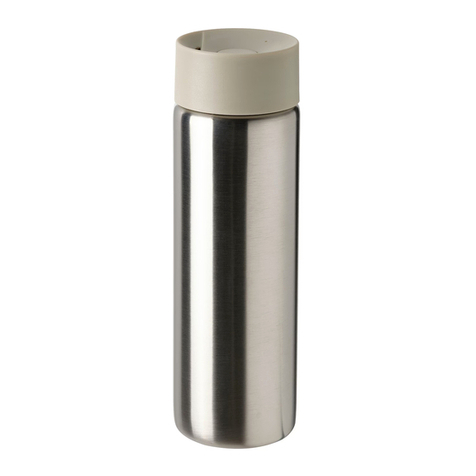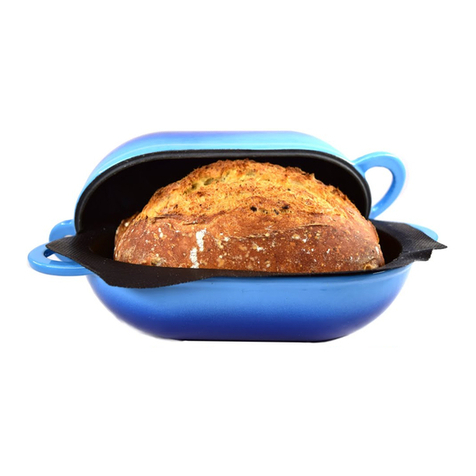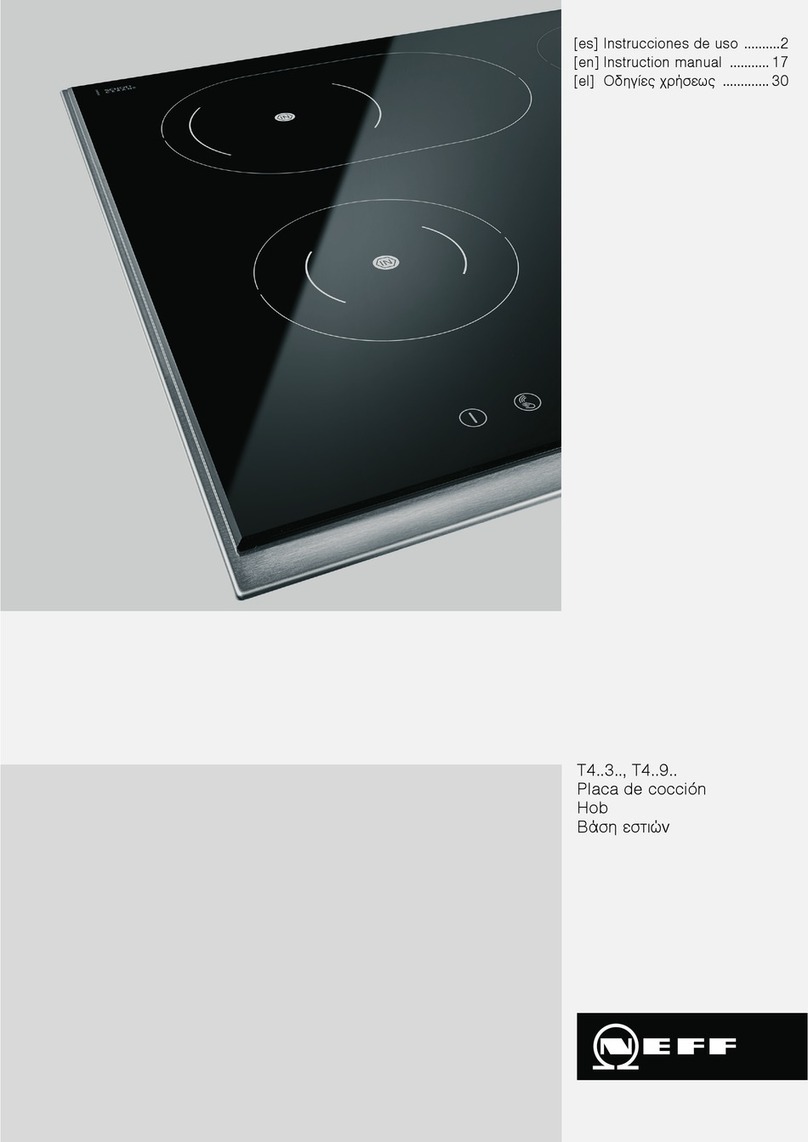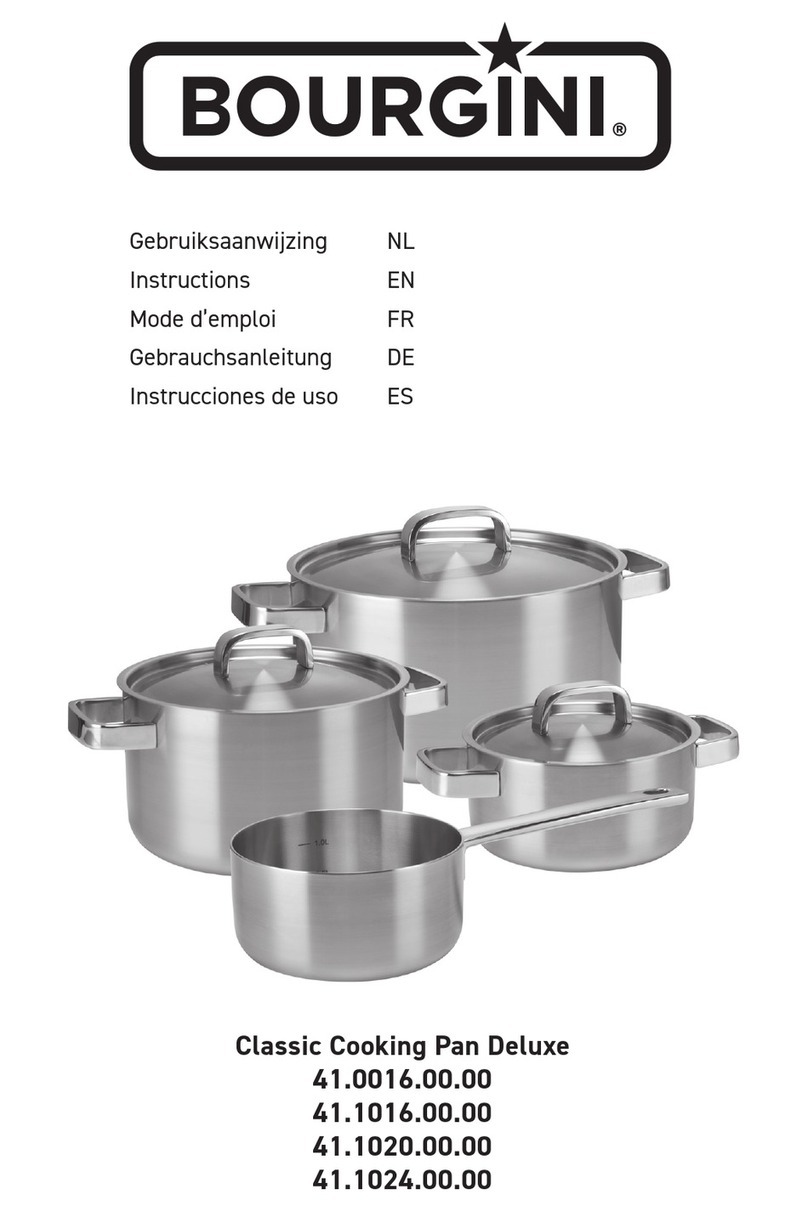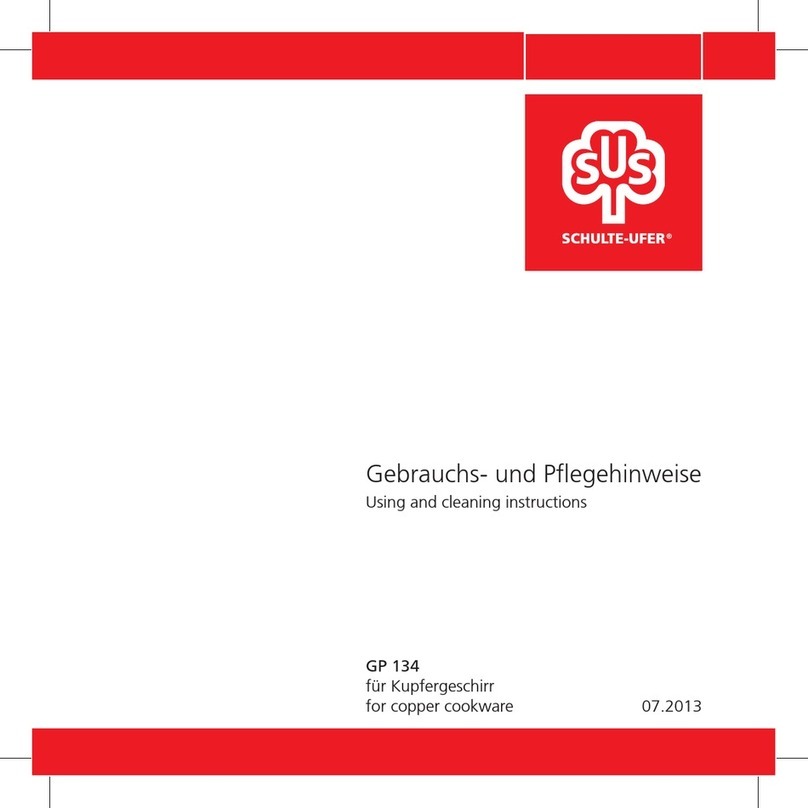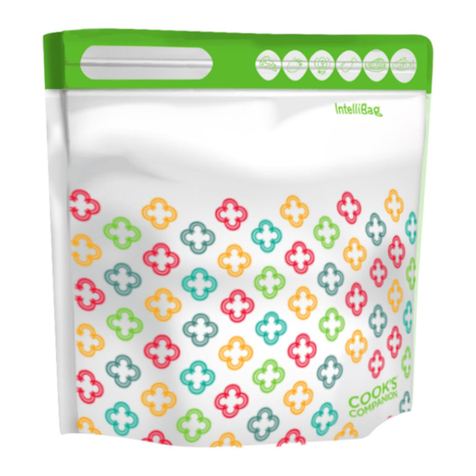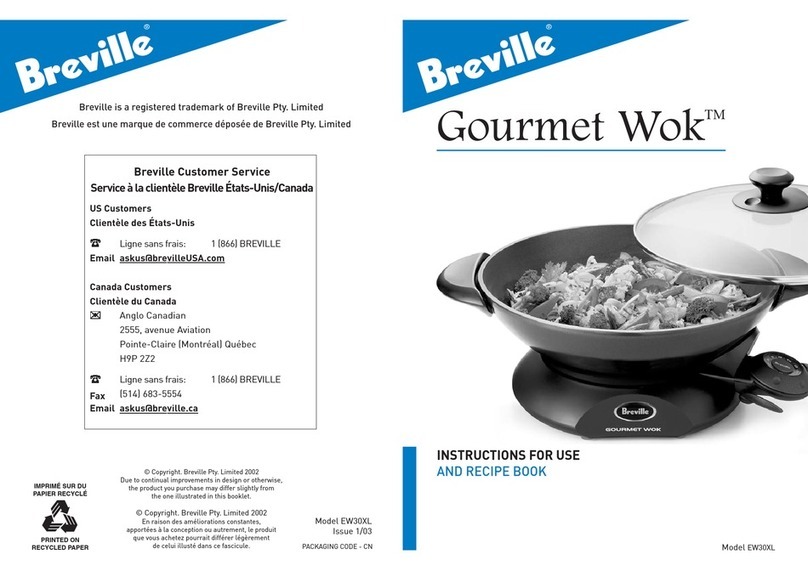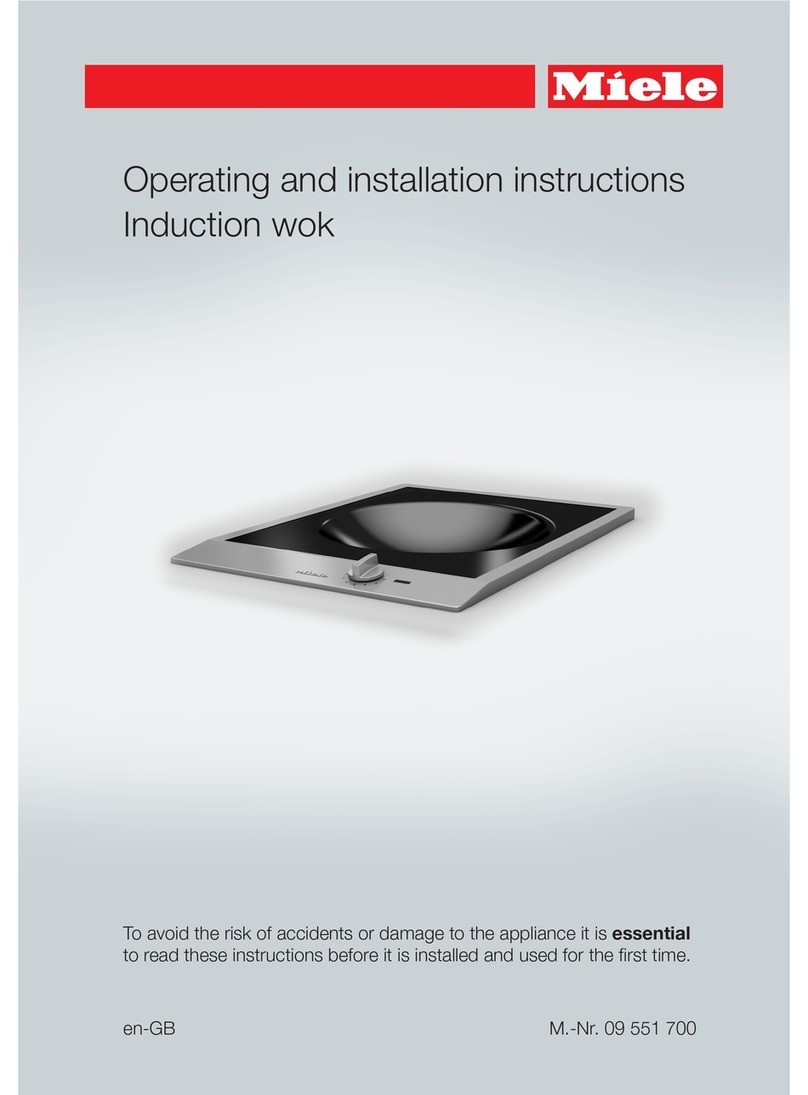T-Fal C51782 User manual

How to better use my product
WHAT SHOULD YOU DO WHEN THE FOOD BEGINS TO STICK?
Non-stick utensils are specially designed so that food does not stick. However, the frying pan or
saucepan has to be properly maintained. For that purpose, please observe the following tips: slightly
oil the frying pan/saucepan before first use and then wash and dry it, repeat the process from time
to time if you wash the frying pan/saucepan regularly in the dishwasher. It is also necessary to
avoid overheating and scratches, in particular due to use of metal accessories (spatulas, ladles)
and/or due to cleaning with a scouring sponge.
IS NON-STICK COOKWARE OVEN PROOF?
Only frying pans, saucepans or saute pans from the Ingenio range can go in the oven, thanks to their
detachable handles (ensure that the detachable handle is removed). Utensils should never be used in
a microwave or convection oven.
INSTRUCTIONS FOR USE AND WARNINGS
• Wash the frying pan in hot water and washing-up liquid to remove any dust. Dry it and rub a little
cooking oil into the non-stick coating before using for the first time. Remove any excess oil.
• Wash and dry your kitchenware after each use.
THERMO-SPOT®: TO WHAT TEMPERATURE DOES THE FRYING PAN
NEED TO BE HEATED FOR THE TEMPERATURE INDICATOR TO
CHANGE COLOUR?
For frying pans: between 140 °C and 195 °C
For crepe pans: between 165 °C and 240 °C
This is the optimum temperature for frying and searing food. This indication helps you cook
healthier and at an ideal temperature.
CAN I USE METAL UTENSILS WITH MY FRYING PANS AND
SAUCEPANS?
You should refer to the recommendations for use indicated on the packaging or in the instructions
included with the product. With some ranges, you can use certain metal utensils with the exception
of knives and whisks. However, to extend the life of your frying pans and saucepans, we strongly
recommend that you do not use metal. Choose plastic or wood.
WHAT SHOULD I DO WHEN FOOD STARTS TO STICK? (CERAMIC
COATING ONLY)
The non-stick properties of the ceramic coating are a lot more limited, both in terms of performance
and duration, than those of the classic (PTFE) coating. We recommend cooking with more fat as well
as washing more vigorously with slightly more washing-up liquid. For baked-on food, we

recommend leaving your kitchenware to soak in soapy water, possibly with a little white vinegar.
Over time, the ceramic base will become stained without it being possible to remove the marks. This
will not impair the performance of the kitchenware in any way and does not present any danger for
health.
GENERAL RECOMMENDATIONS
• Use plastic or wood utensils, with some ranges, you can use certain metal utensils with the
exception of knives and whisks (Refer to the recommendations for use indicated on the packaging or
in the instructions included with the product).
• Avoid cutting directly in the pans.
• Do not gouge the non-stick surface. Slight surface marks or abrasions are normal and will not
affect the cookwares performance.
• After cooking, do not let pans boil dry and do not leave empty pans on a heated burner.
• Always select the proper electric burner size or adjust the gas burner so the flame only touches the
bottom of the pan and does not climb up the sides.
• Never leave pans unattended while cooking.
• Let pans cool before cleaning.
WHY CAN A PAN TURN GONDOLA-SHAPED?
A pan warps under thermal shock (an overheated empty pan, a hot pan in contact with cold water
or placed on a cold surface, etc.).
Before cleaning the pan, let it cool to room temperature.
A warped pan will give poor cooking results.
CAN I PUT MY PANS INTO THE MICROWAVE?
Pans should NEVER be used in a microwave oven.
WHAT TYPE OF UTENSILS SHOULD I USE?
Depending on the range (check the packaging), most metal utensils can be used except knives, forks
and whisks. However, care should be exercised when using any metal utensil. Avoid using sharp
edged utensils and avoid cutting directly in the pan. Do not stab or gouge the non-stick surface.
CAN PANS BE DAMAGED BY HIGH TEMPERATURE?
Yes. High temperature can burn food, producing stains and causing the pan to warp. In addition,
overheating may result in a loss of non-stick performance. A moderate temperature is sufficient for
cooking, because aluminium heats up evenly. Heating the pan to a very high temperature, with
nothing in it, can cause damage.

IS IT USEFUL TO COOK AT HIGH TEMPERATURES WITH MY NON-
STICK COOKWARE?
No. Cooking at high temperature does not result in a significant decrease in cooking time and
certainly does not contribute to the quality of the food, so cooking at medium temperatures is highly
recommended. Another reason for this recommendation is that high temperature cooking might
damage the non-stick coating.
CAN I COOK IN IT WITHOUT OIL?
To extend the life of the coating, you should use a small amount of oil when stir-frying or grilling.
You do not need oil when boiling or stewing.
HOW DO YOU CLEAN A PAN?
Non-stick pan:
Cleaning by hand in soapy water is enough.
The pan must be cleaned each time it's used to remove the film of grease that can stay on the surface.
If the pan is only wiped with a paper towel or rinsed in water, the film won't be fully removed and
may cook the next time you use the pan: stains may appear.
Non-stick pans must not be cleaned with scouring powders or scouring pads. A nylon sponge is
ideal for both the interior and exterior of the pan.
Ceramic pan:
We recommend to wash the ceramic pan manually, with water and a mild detergent. In this way, it’s
the most effective.
If the pan might not be clean enough during the normal dishes, you could add a splash of vinegar
and water into the pan and heat it. The water / vinegar mixture will clean cook the pan. After this,
rinse the pan well, dry and rub with a little bit of sunflower oil for example. And your pan will be as
new.
If the base is stubborn dirt, you can wet the pan soak first with hot water and a good degreasing
dishwashing detergent. Next, if necessary, you can clean the pan with a plastic scouring pad and
some liquid abrasive cleaning detergent.
Hard anodised pan:
To prolong the life of your pan, we recommend hand washing with a non-abrasive sponge.
An exterior coating protects your cookware from the harmful consequences of dishwashing. It is
therefore extremely important not to damage this coating and we recommend that you avoid the use
of scouring pads (Scotch Brite).
In case of dishwasher use, it is preferable to use gentle detergents such as a liquid or gel.
Moreover, a too intensive use of the dishwasher is not recommended.
Washing by hand without scouring pads extends the life time of your cookware.

IS IT DISHWASHER-SAFE?
Some parts are dishwasher-safe and other parts aren't. (Please see below.) If it is dishwasher-safe,
please use a neutral detergent when cleaning. Some dishwashers may not be compatible with
pots/frying pans so please check the instruction manual of your dishwasher before use.
Dishwasher Compatibility:
Pot/frying pan part: YES
Special handle: YES
Cooking lid: (excluding knob of magnet-types): YES
Detachable lid knobs of magnet-types: NO (It may result in rusting)
Storage seal lid: NO (It may result in deformation)
To prolong the life of your pan, we recommend hand washing with a non-abrasive sponge.
Dishwasher use: it is preferable to use gentle detergents such as a liquid or gel.
THE NON-STICK COATING IN MY FRYING PAN IS NOW STICKING -
WHY?
• A build up of food deposits/residue may have formed on the pan which may originally be the
result of an item of food being allowed to overcook in the pan. This can normally be cleaned by
filling the pan with water and washing up liquid and leaving overnight. Then use a paste made up
of bicarbonate of soda and water rubbed gently over the pan with a non-abrasive sponge (a non-
stick scouring sponge). The non-stick coating should then be reconditioned with a little cooking oil
wiped over the surface with a paper kitchen towel.
• The frying pan may have been overheated causing damage and discolouration to the non-stick
coating. When pans are regularly overheated this will lead to a weakening of the non-stick coating.
The red Thermo-Spot in frypans is a heat indicator and tells you when the pan has reached the
perfect cooking temperature. When the spot turns solid red reduce the heat to maintain the
temperature. Do not continue to heat the pan on a high heat as this will result in the pan and the
non-stick surface becoming overheated.
• If cleaned in a dishwasher, after each use re-coat the non-stick interior with cooking oil to prevent
the non-stick from drying out and ensure the best non-stick performance.
THE BASE OF MY PAN IS NOT EVEN AND HAS BECOME WOBBLY -
WHY?
• The pan has been used on too high a heat or the wrong source of heat for the pan which has
resulted in the pan base becoming warped and distorted.
• Also never put cold water into a hot pan or plunge hot cookware in cold water. Sudden changes of
temperature may cause the metal to warp, resulting in an uneven base.
MY PAN SEEMS UNSTABLE ON MY HOB - WHY?
Take care when placing pans on gas hobs as the number of support legs vary and small pans in
particular may need a trivet, which most gas hob manufacturers will supply with their hob or can be
bought from the separately.

THE EDGE OF THE POT/FRYING PAN IS DEFORMED.
Excessive force on the outside of aluminium pots or frying pans resulting, for example, from them
being dropped or hit may result in deformations of the pots/pans. (The pot/frying pan will not
deform as result of cooking heat.)
WHICH TYPE OF PANS ARE SUITABLE FOR USE ON AN INDUCTION
HOB?
The quick way to check whether your pans work on an induction hob is to do the magnet test on the
pans. This is easy, if a magnet will stick to the base of the pans they will work on a commercial
induction hob.
Table of contents
Other T-Fal Kitchen Utensil manuals
